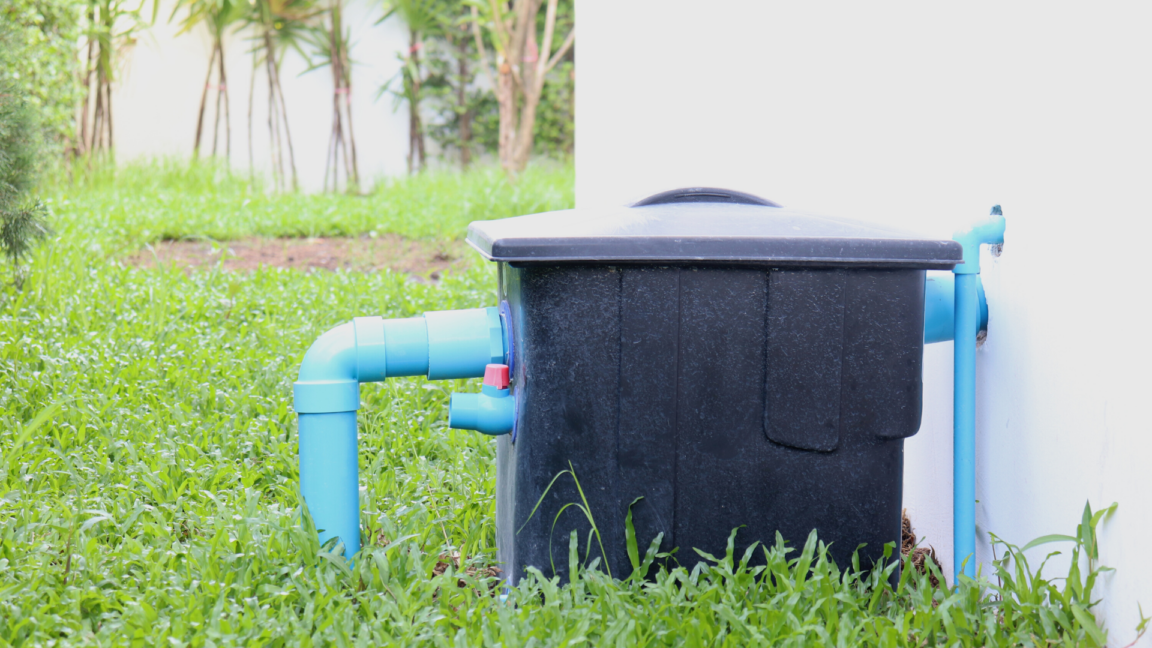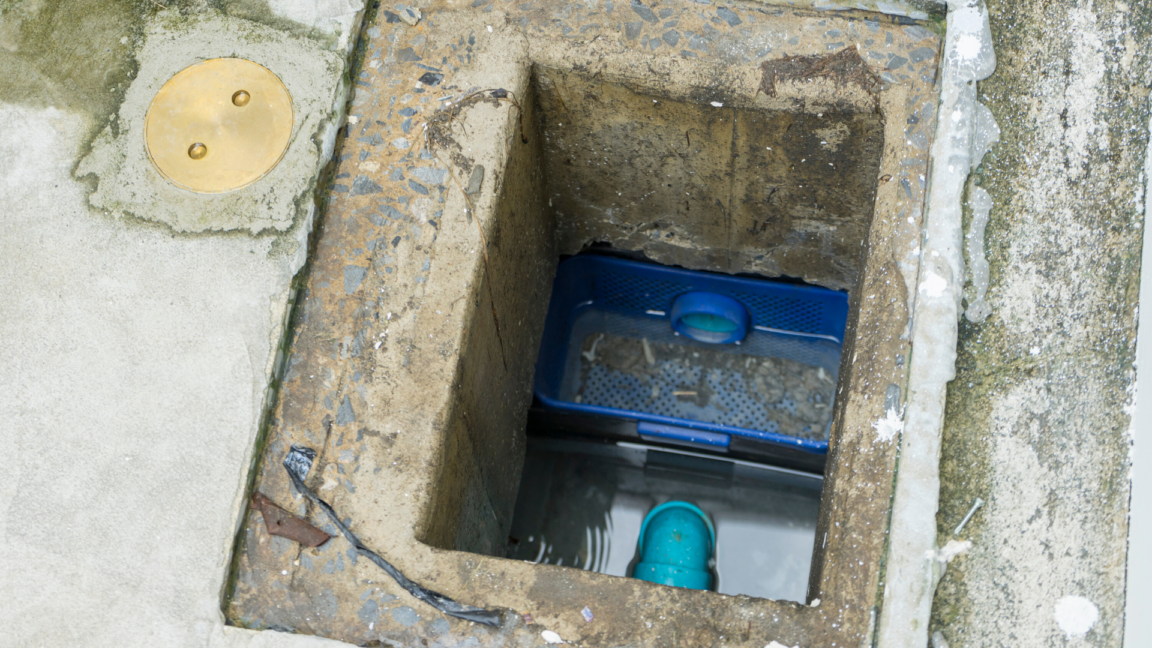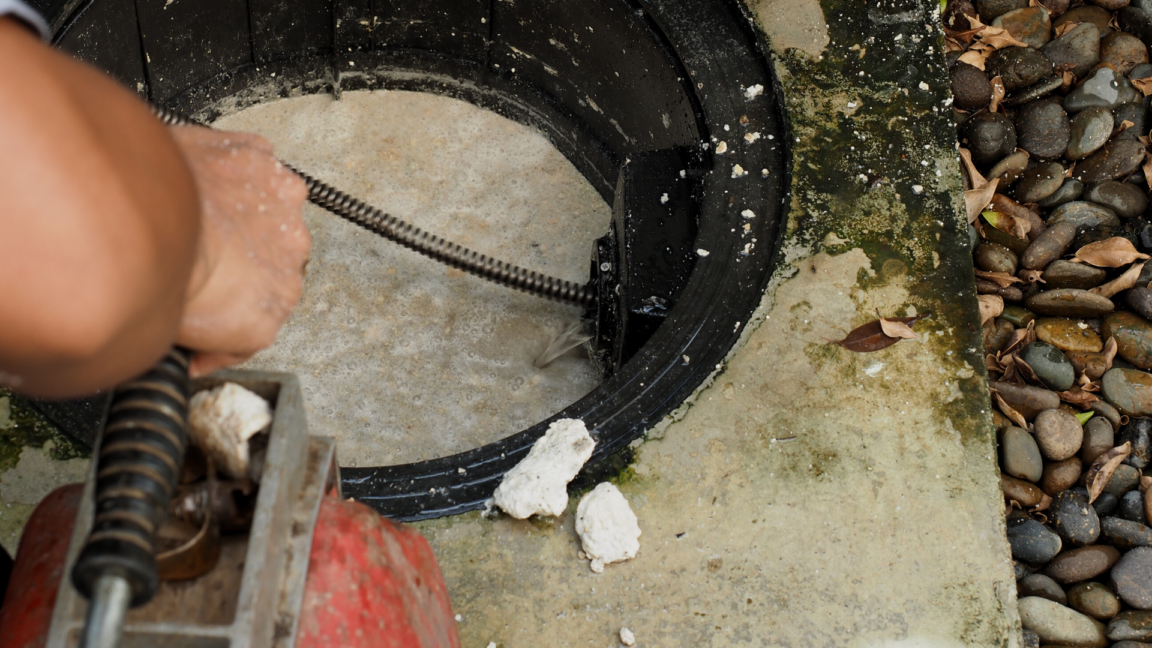What are Grease Traps? Why Your Home Deserves One?


When homeowners consider the different systems in their households, water and electricity systems often take the spotlight as essential public utilities. However, there's another crucial component of waste management systems that deserves equal attention: grease traps. While some may question their necessity, grease traps actually offer significant benefits as valuable additions to any home. In this blog post, PropertyScout aims to shed light on common inquiries about grease traps, exploring their importance, the reasons why every home should have one, and offering helpful tips for choosing the most suitable type for individual needs.
What are Grease Traps?

A grease trap, or grease interceptor, is an apparatus that aids in capturing grease from wastewater within a household, separating it from the water prior to its release into the public sewer system. It serves various purposes and offers the following advantages:
- Filtration: It effectively filters out food debris originating from dishwashing, thereby preventing pipe blockages.
- Odor reduction: By inhibiting the decomposition of food waste in the pipes, it helps minimize unpleasant odors.
- Enhanced wastewater quality: It improves the quality of the discharged wastewater, rendering it more environmentally friendly.
- Easy maintenance: The trap is easy to maintain as it involves the simple task of removing and disposing of the accumulated grease and food waste.
Are Grease Traps a Must for your Home?

The answer is yes because kitchen wastewater is contaminated with grease, which is an organic waste that is difficult to treat. Natural decomposition of grease in water takes a long time. Therefore, it should not be discharged without passing through a grease trap.
Some people may think that grease traps are only necessary for large restaurants. However, in reality, every home should have one, or the outlet pipe should be connected to a grease trap buried outside the house. This is because grease traps not only help filter out food waste and reduce unpleasant odors but also improve the quality of wastewater before it is released into the public sewer system. This ensures that the discharged wastewater is of better quality, environmentally friendly, and demonstrates social responsibility.
How Grease Traps Work
The operation of a grease trap is based on a simple principle: the use of displacement to separate grease from water. The water inside the trap is gradually replaced by incoming water, allowing sufficient time for the separation of grease and water to occur effectively. To achieve this, a baffle is installed in the middle of the trap, reducing the flow velocity of water entering the trap and preventing it from disturbing the separation process between water and grease. The larger the size of the grease trap, the more efficient it becomes in maximizing the separation of water and grease.
The following are the three stages of how a grease trap works
- Food Debris Straining: The trap features a strainer that filters out solid food particles and various debris, reducing the level of contaminants in the initial stage.
- Grease-Water Separation: After passing through the food debris strainer, the water flows through another section of the trap designed to optimize separation. This design takes into account the flow direction of water, ensuring efficient separation and extraction of floating grease from the water's surface.
- Grease Discharge through a Grease Pipe: Once the grease is separated from the accumulated water inside the trap, it undergoes a settling process that typically takes around 7-10 days. Subsequently, the separated grease is discharged through a grease pipe into a collection container or bag for proper disposal.
By going through the grease trap system, wastewater from residential, commercial, or restaurant establishments undergoes a transformation into standardized water that can be safely released into public water sources without causing any pollution.
Tips for Selecting Grease Traps for your Home

For selecting a grease trap that suits your needs, consider the type and size of the tank.
Types of Grease Traps
Grease traps are categorized into two types: above-ground and below-ground. You can choose the one that suits your needs and is compatible with the characteristics of your operating area.
Above-Ground Grease Traps

For spaces with limited room, such as bedrooms, condominiums, or townhomes, above-ground grease traps are the perfect solution. Their compact size makes them an ideal choice. Installing them is a breeze, as you only need to connect the wastewater pipe from the sink to the grease trap and then link the grease trap's wastewater pipe to the public sewer system. Whether placed under the kitchen sink or externally, above-ground grease traps are convenient to use and maintain.
Below-Ground Grease Traps

Suitable for spacious single-family homes, where there is ample usage area, burying the grease trap underground in the exterior of the house is a viable option. This is because the size of the grease trap is relatively large. However, the installment can be quite challenging as it involves digging a hole for the trap and designing a wastewater pipe system connecting to the kitchen sink and laying the pipes outside the house. This makes maintenance more difficult. Nevertheless, it provides a neater appearance compared to above-ground installation.
The ideal Grease Trap sizes for your home
In addition to choosing the type of grease trap, selecting the appropriate size is crucial to match the usage requirements. This decision directly affects maintenance and upkeep. Choosing an improper size can lead to various issues. Grease traps come in a range of sizes, typically ranging from 15-140 liters. Consider the following guidelines when selecting the size:
- For households with 1-5 members, a 15-liter grease trap is recommended.
- For households with 6-10 members, a 30-liter grease trap is recommended.
Grease Trap Inspection and Maintenance tips

Inspection Methods
- Check the condition of the grease trap lid for any signs of damage, cracks, or breakage.
- Test the opening and closing mechanism of the grease trap lid.
- Ensure that the interior of the trap is in normal condition.
- Verify that the grease trap strainer is intact and not broken.
- Check if there is any food debris on the strainer.
- Allow water to flow into the trap and test for leaks. Open the drain and observe if water overflows from the trap. If there is overflow, close the drain and observe if the water level decreases. If the water level consistently decreases, it indicates a leakage or breakage in the trap.
Maintenance Methods
- Maintaining your grease trap is a simple task that can be easily done. Make it a habit to scoop out food scraps into the garbage on a regular basis, ideally daily or at least once a week. Additionally, it's advisable to remove any floating grease above the water every week. To ensure optimal functionality and minimize unpleasant odors from accumulated waste, it is recommended to clean the grease trap twice a year or every six months. By following these maintenance practices, you can keep your grease trap in top condition and avoid any potential issues.
Don't forget to equip your home with grease traps!
The information and tips provided by PropertyScout regarding grease traps lead us to an important conclusion: grease traps are more than just handy devices for households; they also play a vital role in benefiting the public. This article empowers readers to confidently evaluate the condition of their existing grease traps and make informed decisions when purchasing new ones. By following the recommended tips, individuals can ensure optimal functionality and easier maintenance. Remember, selecting a grease trap that aligns with your household size and installation area is crucial for maximum effectiveness. Let's embrace the power of well-maintained grease traps to create a cleaner and more sustainable environment for all.
Looking for a reasonably-priced home? Let PropertyScout help you today! Got further questions? Don't be afraid to speak up!



